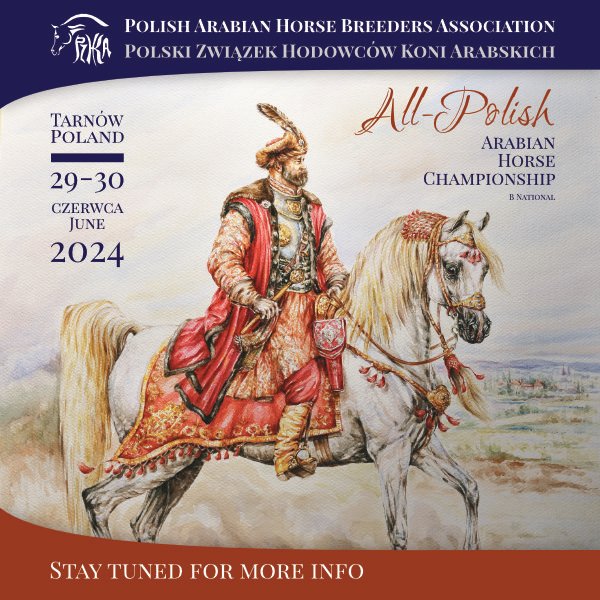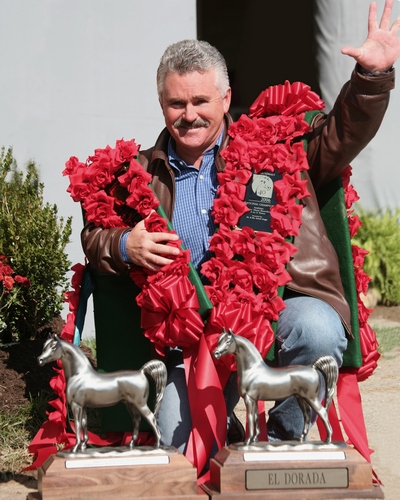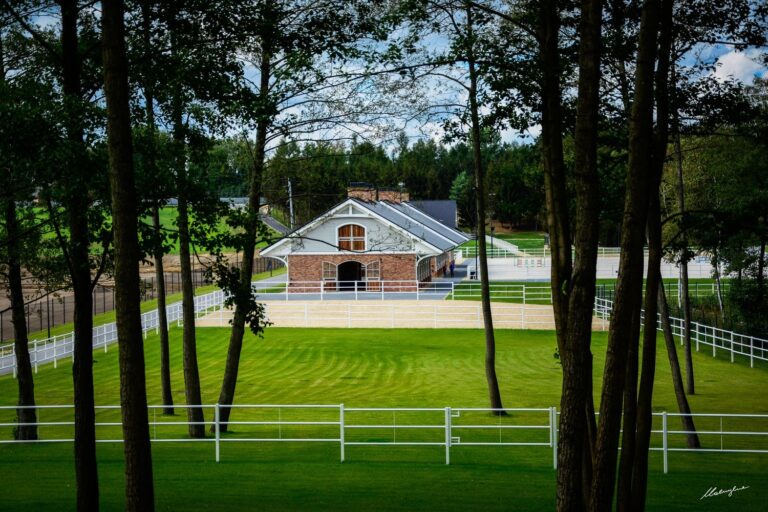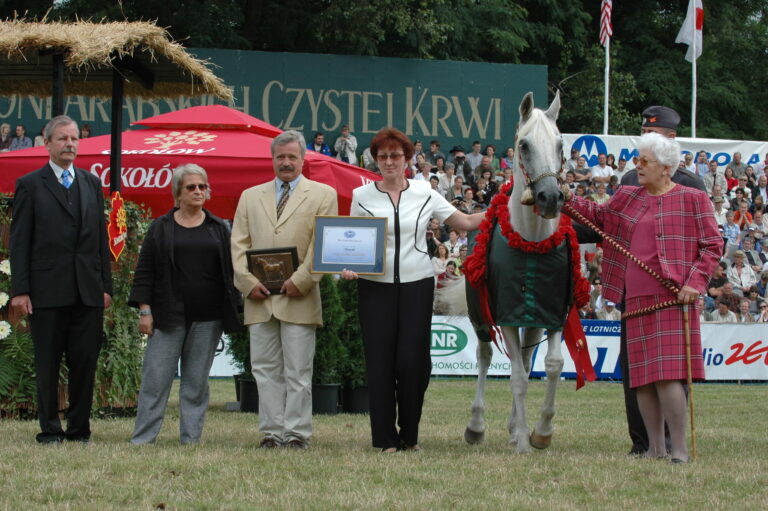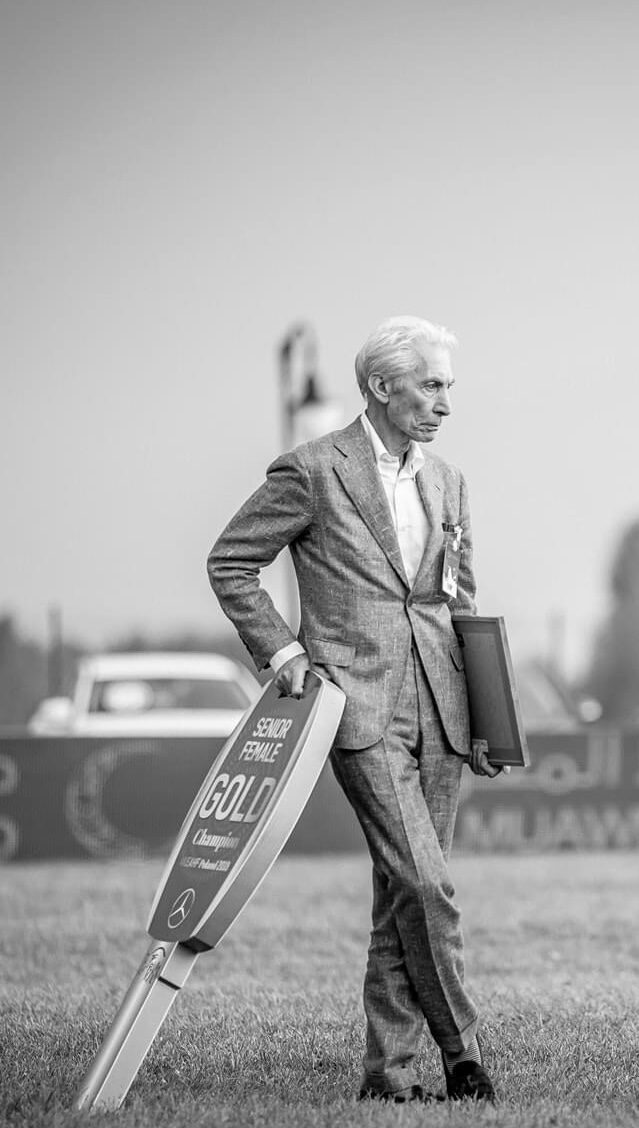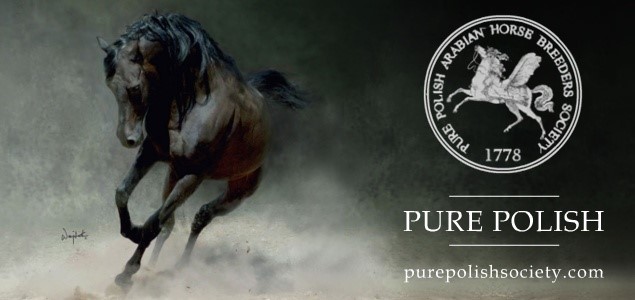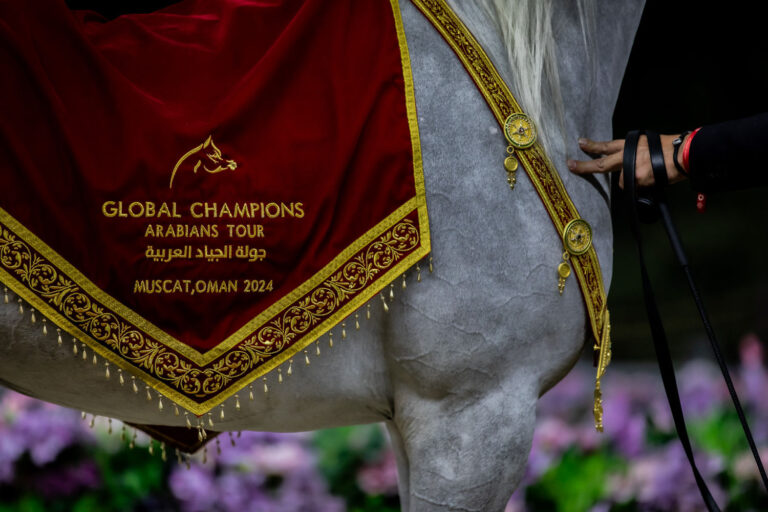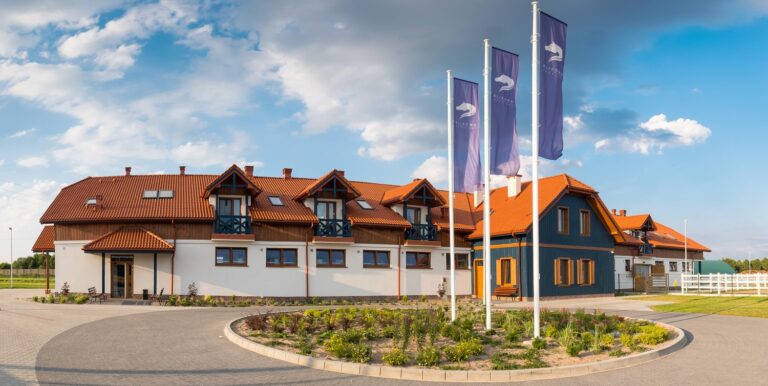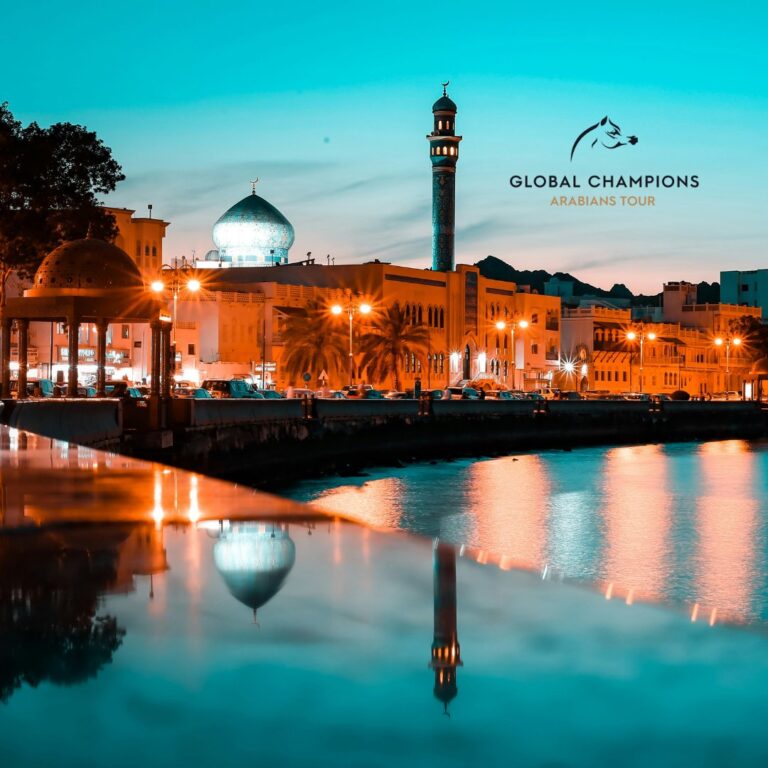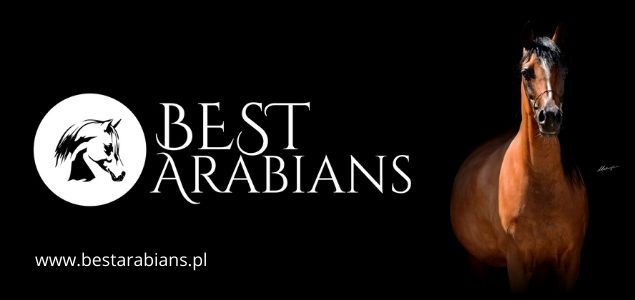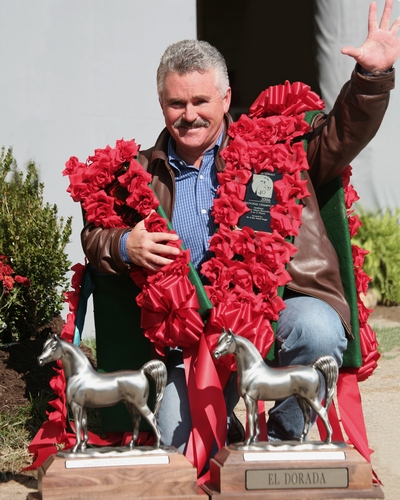
JERZY ZBYSZEWSKI, better known as George Z, was born and graduated in Poland, but has been living in the US for 27 years. Prior to his departure, he worked at state studs. In 1981 he found his way to Sir William Farm in Arizona and so his international career began. He is an exceptional figure in the world of Arabian horse breeders and enthusiasts – it is thanks to him that stars such as Emanor, Kwestura, Zagrobla, Fallada, El Dorada, Ganges or even Pianissima came to the US. Apart from that he is a renowned judge and expert on Arabian horse breeding.
Monika Luft: How did Jerzy Zbyszewski from Poland become George Z of the US?
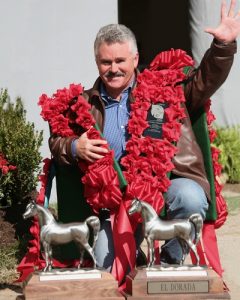
George Z: It was just as much a case of coincidence, as marketing. When in March of 1981 I came to the US (Scottsdale, Arizona), it turned out that no one could pronounce my surname, and when they read my first name, it resembled the name of a lovely and high milk producing breed of cattle: Jersey. So I became George, an English version of Jerzy. The name George has stuck to me so, that even my Polish friends and part of my family call me that. When in the 90s I opened my training stable in Washington (near Seattle), I had to give it a name. I asked one of my friends, a promotion specialist, to design a logo with my name, and she suggested “Geroge Z”, which I use until this day. She said then (and she is truly great when it comes to marketing): “You will sell better. What I have come up with is simple and every dork will remember it”. And she was right!
M.L.: When did you acquire your first experience with Arabian horses?
G.Z.: I encountered Arabian horses for the first time during my university studies in Cracow in the 70s. Michałów was relatively close. Through friends (Anna Rey-Lachacz and Elżbieta Potocka) I met Urszula Białobok (then Laufersweiler). We became friends. As times were hard, you had to do everything by yourself. At Michałów thanks to Urszula I learned for example to make a pizza. It was our primary food when I came for the weekends. Then for the first time I saw Negatiw and Warmia. In later years I worked at Golejewko Stud, as an assistant to the superb expert and wonderful man, Maciej Świdziński. One of my numerous tasks was to escort horses from Golejewko to the Służewiec racetrack. There, in the Golejewko stables, I again met up with Arabians.
M.L.: Your mentors on both continents are…
G.Z.: From the „Polish” period definitely the afore mentioned Maciej Świdziński, who not only “brought down to earth” a daydreaming student, but also gave him a chance! From the „American” period – Jola and Zenon Lipowicz at whose Sir William Farm in Scottsdale, Arizona, I began my lifetime adventure with Arabian horses. My mentors in Arabian horse breeding are also of course the late diectors: Ignacy Jaworowski and Andrzej Krzyształowicz and from abroad – Lenita Perroy from Brazil and Sheila Varian from California.
M.L.: I can guess what you learned from directors Jaworowski and Krzyształowicz, but can you please reveal what you owe to Lenita Perroy and Sheila Varian?
G.Z.: Lenita Perroy is in my opinion the world champion in „line breeding”. My long discussions with Lenita always return to the same subject: how to use the blood of the same stallion on his daughters, granddaughters etc.?… Sometimes she has Ali Jamaal even 4 times in the pedigree of a horse and not further than the third generation. This always fascinated me, because it would seem that from such matings should come destructs, and she does not get them. The primary rule is the phenotype of the individuals, which we want to use for mating. They must be large framed and of good bone quality. I have learned a lot in this matter from Lenita. When she started treating me more like a friend and less like a visitor, we began going out to the pastures together. Often, when I’m at her place, we sit among the herd, observing the horses and… she talks, and I’m all ears.
Sheila Varian is completely different. She believes in a dosage of new blood. She bred the wonderful Stallion Huckleberry Bey and then searched for new blood, to breed an even better horse. She used Sanadik El Shaklan and others, until she finally bought an Ali Jamaal son, Jullyen El Jamaal. She experimented also with Polish horses (besides, her entire herd descends from three Polish mares imported in the 60s). Sheila is a very good observer and evaluates her horses extremely strictly. I like that in her very much.
M.L.: And what stars will we find today at the George Z Training Center?
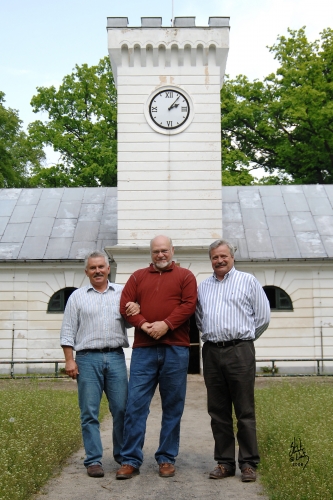
G.Z.: You will not find any, because George Z Training closed its doors in May of 2007. In 2006 I became employed as a consultant for Pride of Poland USA, LLC and during my work there I met Frank and Carol Hennessey. After a year of acquaintance they asked me to supervise the building and take care of their newly purchased farm in Ocala, Florida. I undertook this task and for four months travelled between Florida and Seattle (a 5 hour flight one way). After that time Frank Hennessey offered me the position of head manager of Hennessey Arabian, LLC. I accepted the offer under the condition that I would be able to advise other clients as well. Hennessey agreed, but unfortunately it meant the end of the training stable in Washington. Now horses leased from Poland are housed in stables of trusted and friendly trainers.
M.L.: Your favorite type of Arabian is the Polish type, American, or maybe Brazilian?
G.Z.: My type is the type of George Z. I believe that a good horse is always good, regardless his country of origin. Horses which I like and admire can be found both on the pastures of Janow, Michalow and Białka, as well as Brazil, Australia or anywhere else in the world.
M.L.: What are the most widely spread myths about Polish Arabians across the pond?
G.Z.: There are two myths about Polish Arabians in America. The positive one is that horses from Poland are extremely athletic and easy in training. The negative – that they lack type. That’s why the presence of the leading “halter” horses from Poland is so important in the US. Kwestura, Zagrobla, Pianissima, El Dorada, Emandoria and many others, which I have leased for my clients during the last decade, proved that a horse from Poland can compete with others and come out victorious. Unfortunately the Arabian business is a visual business and we have to constantly remind the breeders, viewers and judges that the Polish horse is a handsome horse. That’s why there is a constant need for the presence of Polish horses in the US. In the last decade the Polish horses became definitely more typey. In most cases they did not lose their correct conformation and movement.
M.L.: However, as we know, “bold and beautiful” is only a theory or rather an unequalled ideal…
G.Z.: We see more and more horses, who are only beautiful and working under saddle is to them like scrubbing floors by the leading Prada models. The second group of horses are those (sticking to the mentioned metaphor) who put their heart into scrubbing that floor, developing their muscles, but when going out to the store put on double make-up, wrap themselves tightly in a scarf and run to the nearest plastic surgeon. The split in the Arabian breed is a process which – whether we want it or not – exists and is a fact. Is there any cure? I have no idea. The constant pursuit of perfection did not omit the Arabian business. The world’s sport arenas demands are to go faster, higher and the standard goes ever up. The same is happening on the show arenas. Horses for halter showing are almost a separate breed in comparison to the performance horses. It is a highly disturbing occurrence, because the Arabian horse is meant to be a versatile horse. That’s why the Polish racing program is so valuable, as it guarantees a performance trial and the same horses, which compete in the races, later compete on the show arenas. It is a very positive phenomenon on a large scale and for that reason, among others, I look upon the problems at the Służewiec Racetrack with utter horror.
M.L.: Your beloved horse is…
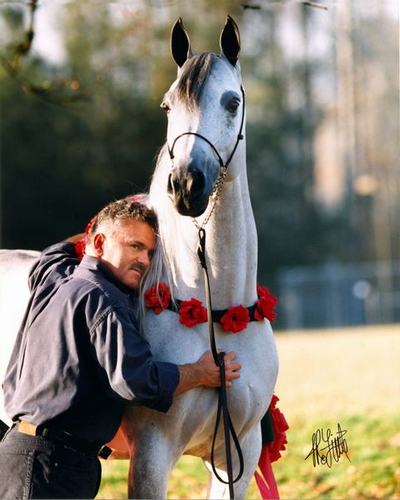
G.Z.: Emanor! This horse not only changed my life, but is the best example of intelligence, wisdom and gentle character typical for the Arabian breed. Emanor stood for a couple of years in my stable in Auburn, Washington. Successive titles of US Champion, first in the halter category, later under saddle and the stress which came with that never changed this horse’s character. When clients came to my stable to see him, I used to let him loose on the arena. Aroused with rattle and plastic he loved to show, trotting effectively with his tail raised over his back and a highly carried head. He made an impression of a truly wild Arabian of the desert. When the presentation came to an end, he stood in the corner of the arena, waiting with a lowered head, so that I could put on his halter and lead him to his stall.
I will never forget the presentation in Santa Ynez, California in the stud of his owners, Ron and Mila Hart. Emanor performed under saddle, later was set loose, all this accompanied by loud music and the screaming of the crowds. When I was leading him back to his stall, a man came up to me with his daughter. He shyly confessed that the girl’s dream was to ride on Emanor. Without hesitation I lifted the child off the ground and placed her on the stallion’s back. If you know the American law, you know that in doing so I secured a sentence for myself in a suit against an insurance company. Emanor carried the girl around the stall calmly, without any interest in what was happening outside. He is a wonderful horse.
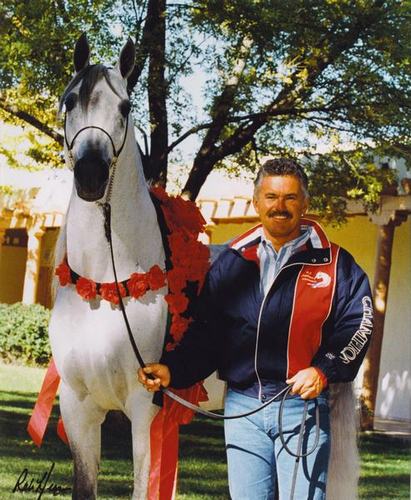
For the 2008 and 2009 season he has been leased by Michigan State University. The university boasts a very resilient Arabian horse breeding program and Emanor will have a chance of covering many good mares. I am currently speaking with the owners of Emanor, Mr. and Mrs. Hart, to have Emanor come to the stud of Frank Hennessey in Florida during his break between the seasons. The charm of old times past would become a reality and I would once again have Emanor at my place. Beside a wonderful character he is the best balanced Arabian I have sat on. I could return to the morning rides on Emanor…
M.L.: Can any of the Polish horses in America live up to Bask’s legend?
G.Z.: Bask cannot be compared to any other horse from Poland and whoever tries to do so either does not possess knowledge on the subject or wants to force through his personal theories unsupported with facts. Bask was a breakthrough horse. He was at the right place at the right time and was what American breeding was waiting and ready for. Since that time this situation has not been repeated. There were many significant stallions imported or leased from Poland, but none of them was Bask.
M.L.: What should every serious breeder avoid?
G.Z.: „Barn blindness”. A whole number of breeders suffer from this illness. It is a disease easy to diagnose, but in some cases it is incurable.
M.L.: Perhaps you could mention a couple of signs for better clarity…
G.Z.: Barn blindness is when we can’t stand criticism and every horse in our stable is the best in the world. Even if someone points out something in our pupil which is evident, we search for excuses. For example the horse has a steep hoof. The breeder explains: as a foal he pawed at the ground in his stall and this heel rubbed off, and the other one didn’t. You wouldn’t believe how creative in their answers people can be, who in other areas are quite intelligent and smart. I have always believed that if you tell an Arabian breeder that his child is dumb, he will accept it calmly. But God have mercy if we tell him his stallion is a gelding! He will never speak to us again.
M.L.: So what would you advise to a beginning breeder?
G.Z.: Trust your own intuition and acquire as much knowledge as possible. Be very careful in imitating. What worked for others, not necessarily has to work for you.
M.L.: What horses are your clients looking for in Poland?
G.Z.: They look for horses that could win at the highest level in the US. Breeding mares in Poland are relatively expensive. With the current low exchange rate of the dollar, a limping economical situation in the States and increasing transport cost of horses from Europe to the US, it is cheaper to buy a mare at home, in America. A magnet for my clients are definitely horses for showing.
M.L.: In that case what should the Polish private breeders do to open the doors to the foreign markets?
G.Z.: Be present at various events, strike up personal acquaintances with other breeders. A large part of the Arabian business is PR (public relations). The old saying “to be invited, one has to invite” proves to be true. Many breeders arrogantly claim “When I’ll have good horses, they’ll come by themselves”. Unfortunately, it’s not true. In times of huge competition a good product does not guarantee success. Years ago, as a person interested in life’s many aspects, I attended a marketing and PR course at the University of Washington in Seattle. During one of the lectures our wise and experienced teacher (responsible for PR in the famous Starbucks) began his lecture with stating: “The time of simple selling of products to the client is over, the time of personal relationship between the seller and buyer has began”. It is a very prospective way of thinking and many businessmen in the US abide by this rule as the primary marketing law. Think about it. We have a choice between cars of the same class. One seller professionally recommends his merchandise, but doesn’t spare us his time and doesn’t return calls. The other on the other hand offers us tea, asks (without being nosy) about our spouse’s health and calls back within 5 minutes. From whom would you buy the car?
M.L.: It’s obvious… And what is your answer to the hardest question, haunting every breeder – „whom to breed to”?
G.Z.: There is no straightforward answer to this question. If I knew the answer, I would lucratively retire long ago! Good sires are hard to come by all over the world. In my opinion you have to evaluate your mares very strictly, define your goals and… try. The leading sires in breeding are not perfect. There are no perfect horses. That’s why you need to realize what benefits and dangers may appear with the usage of a certain stallion. Here begins an exam of our knowledge and intuition. I hate when people glorify one stallion and trample another. For example the famous and controversial to some Bey Shah. Naturally this stallion introduced weak and often faulty hooves, conformation flaws in the legs, but at the same time no other stallion gave progeny with such charisma and show abilities. It is a trait highly hereditary in the line of Bey Shah. Likewise you can look at the Polish Bandos. The stallion was immensely meritorious for Polish breeding, introduced a lot of type and beauty, but also long loins, a poorly coupled body and a white eye. Only a wise breeder will use a stallion in such a way, that the next generation will have only his good qualities and not faults. It is a true art.
M.L.: There are discussions in Poland on creating a comission to qualify stallions. Will the introduction of such a system, like the German or Dutch one, have sense?
G.Z.: I think that if the system should be introduced in a reasonable, objective and rational way, it will help breeding immensely. In the US there is no qualifying system for stallions and I doubt there will ever be one. Everyone can breed to whom they wish. The qualifying system is probably a very logical solution in the current situation.
M.L.: What chance does Polish breeding have against the larger and larger domination of the Middle East?
G.Z.: I don’t fear the domination of the Middle East breeding at all. To breed horses (regardless of the breed), you need a lot of knowledge supported by tradition, from which you draw constructive conclusions. Today’s strength of the Middle East comes from unlimited financial possibilities, not from unlimited knowledge.
M.L.: How do you feel about controversial subjects, such as embryotransfer?
G.Z.: Personally I hate embryotransfer. Mares were not made to have litters. This is my private and personal feeling, but… life dictates otherwise. That’s why I carry out transfers, negotiate contracts based on the number of embryos from a mare and sell unborn foals in recipient mares. I support the transfer of embryos only in the case of a mare who cannot maintain a pregnancy. Unfortunately there is no possibility to regulate the number of transfers in only such a way.
I am also against shipping cooled semen. Natural covering decreases the number of progeny by a given stallion and results in larger marketing possibilities. Of course by proclaiming such a theory I’m setting the cat among the pigeons, because there are undeniable benefits from using cooled and frozen semen. That’s why I emphasize yet again, that it is just my private and personal opinion.
M.L.: How to promote Arabian breeding? Is the popularization of knowledge about Arabian horses at all necessary?
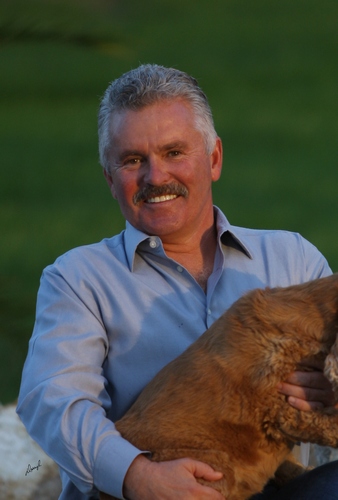
G.Z.: The propagation of knowledge on Arabian horses is in my opinion a necessity, if we want the popularity of the breed to increase. Today the rivalry in breeding comes under the same laws as other business areas. Companies producing cars outdo one another in advertising ideas. It is exactly the same in the equine business. It is not a secret that there is a battle for the client between breeders of various breeds. In a large part the promotion and popularization of Arabian horses decides about the fact that someone who wants to have a horse, will turn to an Arabian stud or a different stable. An effective promotion lies in the interest of the breeders and owners of Arabian horses. Without it the popularity of Arabian horses will decrease and without demand the supply becomes a nonsense. The promotion of Arabian horses should in my opinion be based on emphasizing the performance qualities of the breed. Unfortunately in Poland, similarly to the rest of Europe, the saddle usage of Arabians is crawling. A very large number of horse buyers (mostly geldings) in the US are elderly people, who can enjoy a ride on a well schooled, gentle, softly moving Western Pleasure horse. It is a usage undiscovered by Europe. Of course such a change will not happen overnight. You need expert trainers, schooling centers and… proper promotion.
M.L.: Do you find time for a non-equine hobby?
G.Z.: Not much. Maybe because I never treated my job as something which I had to do. I simply like what I do. And if something in life gives you genuine pleasure, then you are drawn to it, not pushed away. It doesn’t mean that there aren’t days when I operate so fast that at the end of the day I’ve had enough.
I like to ski, both on snow and water, but I have neglected that lately. Usually two weeks in a month I travel across the States or abroad, looking for horses or judging shows. Sometimes during these trips I have a free afternoon. Then I go for a walk. If I’m in a city – a walk through the streets, dropping by shops and cafes; if out in the country, I simply go into the wild. I keep on promising myself that it will change, but for now it doesn’t seem to want to happen…
M.L.: Last question: where does the beauty and charisma in breeding Arabian horses lie?
G.Z.: Having worked for many years directly with Arabian horses, I got to know their extraordinary intelligence. In my opinion that is their largest charm. In the past I worked with Throughbreds, half-breds… There is nothing like an Arabian. Yes, they are not large, but they make up for it with everything else!


